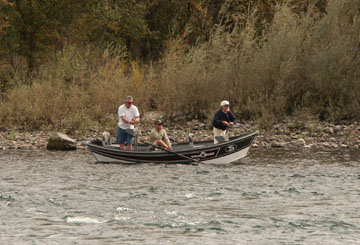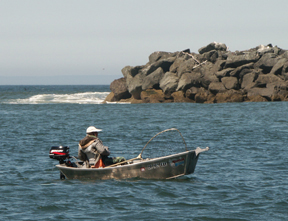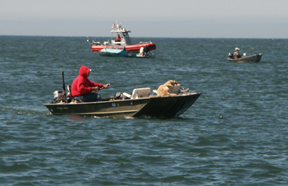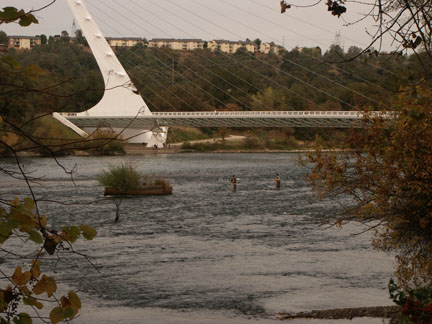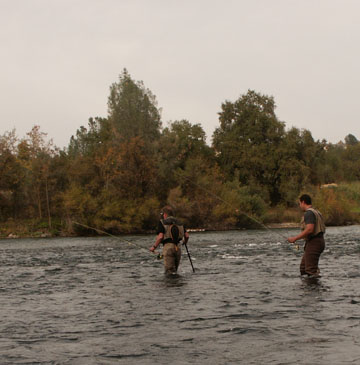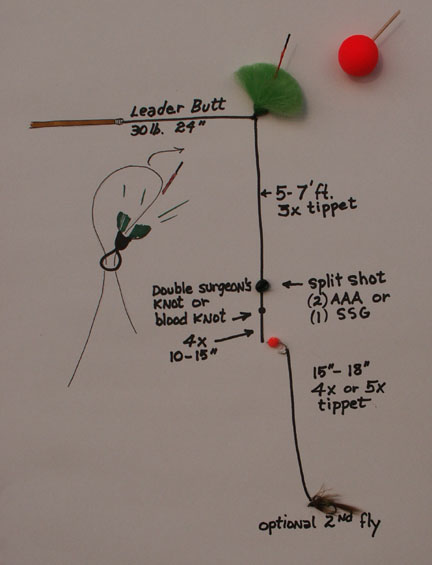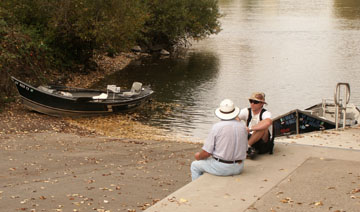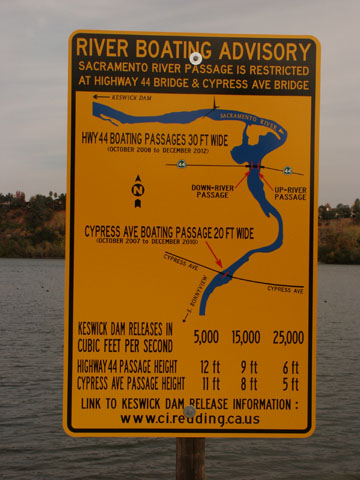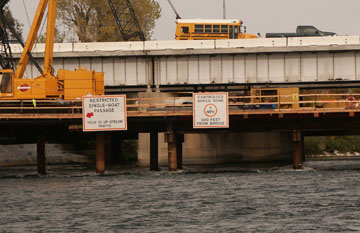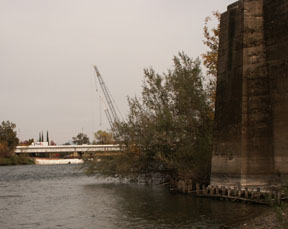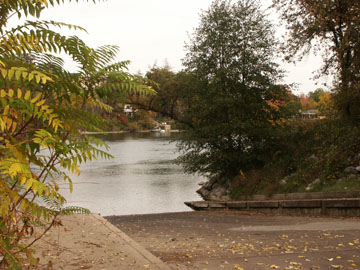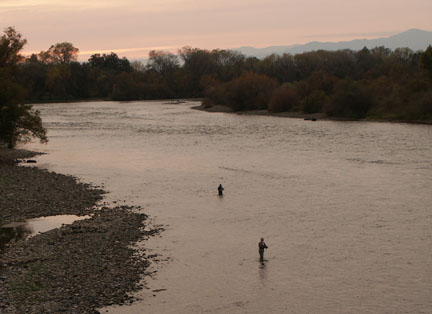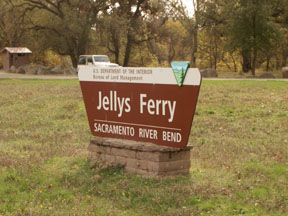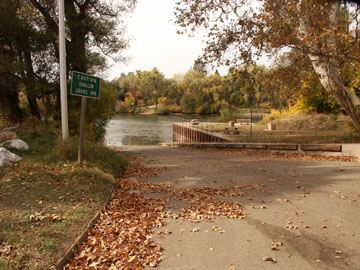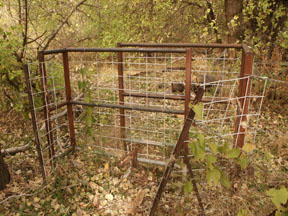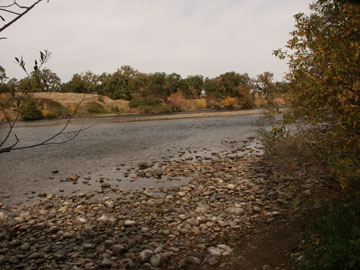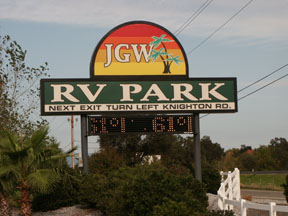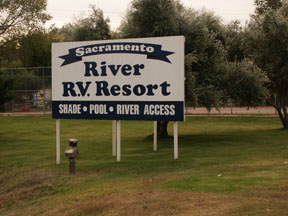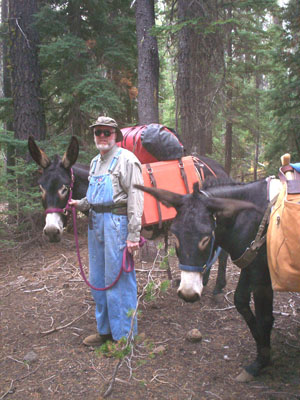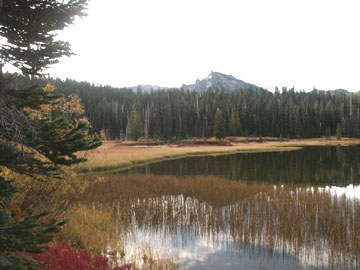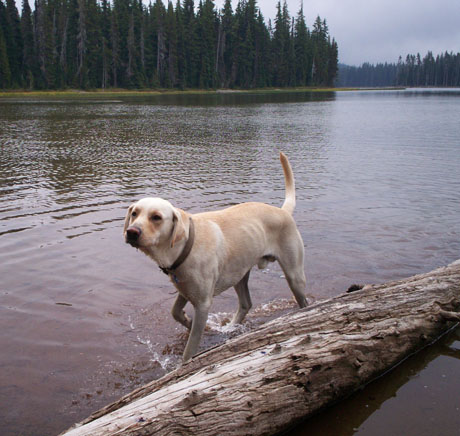August 1, 2007
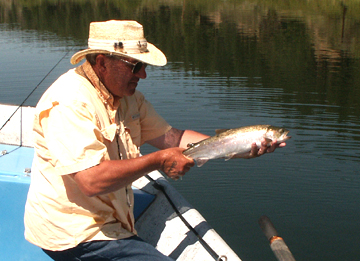
Our targeted hatch, often misidentified as a Green Drake or a Pale Morning Dun, was the genus, Emphemerella, the species doddsi. Leisurely gliding down the Williamson River in south-central Oregon, the dark green waters silhouetted the unmistakable sails of mayflies, but we were on a mission to locate the doddsi and test Sid's latest nymph pattern. Pushing on to the frog water, Sid gently rowed his drift boat while scanning the river ahead for the chameleon of Mayflies. I would learn that the doddsi posed a serious challenge to fly tiers in that within an hour of breaking through the surface and transforming to a dun, the body would take on an entirely new hue from yellow to dark, mottled green or a greenish brown. Large fish were nudging the surface and sucking down a variety of mayflies. Although the sippers and boiling trout quickened my heart rate, Sid, impervious to the obvious potential to cast to fish forty feet from the boat, kept his attention on the water. "There's one, no two," he exclaimed. "Up against the opposite bank just below that log. OK, let's see how long they drift before being gulped for breakfast."
I looked across the river straining to see the bugs that he was watching. "Yes, I see one I proudly concurred."
"Gone! Look at that boil. That was a nice fish," Sid said.
"Well, I saw the rise, I saw the boil, but I am confused because I still see the bug floating unmolested," I replied.
Sid turned and looked at me. Noting that I was squinting through my glasses he asked, "How many bugs did you see floating?"
"One," I replied.
"What you were looking at was a Hexagenia limbata, about five times the size of a doddsi."
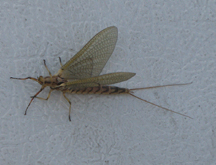
"No wonder I could see it," I mumbled. Later we would catch a Hex, and it would measure a full inch from the head to the end of the abdomen. Although typically emerging at dusk and into the night, we observed numerous Hexagenia drifting along with the doddsi. I was floating on a world class trout river famous for its huge trout with a quintessential world class fly fishing guide, Sid Mathis of Free Spirit Guide Service in Klamath Falls (541-884-3222). Earlier in the year I had asked to interview Sid, and now here I was in his drift boat watching Sid catch and release Klamath Lake rainbows on a beautiful section of the Williamson River. The only floating section on the lower river stretches no more than three miles from the county boat launch just outside of Chiloquin to the Wagon Wheel Campground below. Unlike the freestone rivers of Montana that I guided on, float fishing the Williamson River is akin to stillwater fly fishing. We anchored in one small area for two hours. During that period I would estimate that I saw between forty and fifty rises. When we drifted further downstream, Sid had me hang over the bow and count the trophy size trout darting out of the shadow of the boat. In two holes, within a forty yard stretch, I counted over twenty fish, weighing two to five pounds. Awestruck, I took my seat, opened up my briefcase and took out pen and pad along with a tape recorder. Earlier I had explained that I wanted to write a good article on fishing the Williamson River and Klamath Lake. I wanted to avoid the glib generalities that I had encountered in numerous articles that I had collected, and I wanted to gather this information from an authoritative source.
Q: How long have you been a guide, and did you have a mentor to help you launch your career on this challenging water?
Sid: I started fly fishing in 1976. By 1978 I had adopted the principle of Catch-and-Release. In 1980 I learned from an inside source that they were going to shut down the mill that I worked at. I had been running shuttles for Rich Henry, a Native American and local guide on the Williamson River. Rich grew up in the Beatty area and began fly fishing and fly tying in the early 70's. He was a great caster and an innovative tier. He asked me if I would be interested in guiding for him when he had more bookings than he could handle. I got the overflow, but I soon discovered that I had clients that would bring along a thousand bucks worth of flies and argue with me if I tried to steer them to one of my favorite patterns. Although I knew what I had was a better offering, I didn't have the experience or knowledge to change their minds. When my clients persisted in using poor fly selections and didn't catch any fish, I knew I had to master my craft. I went to Rich and told him that if I was going to continue as a guide, I had to do it right and master this new career.
I asked Rich if he would teach me all that he knew. Rich took a long pause before answering. He reminded me that he made his living guiding and that to take me on as a student would cut into the days he could otherwise spend on the river guiding fly fishermen. I pressed him and asked him how much he wanted. I would need $25,000 he said. That was a lot of money in 1982, and I was at a loss of words. I told him it was a lot of money for a year of tutoring. He replied that it would take maybe three years. I agreed to pay him half at the beginning and the other half when he felt I was done. I won't describe my wife's reaction, but after 27 years of guiding, I never spent $25,000 on anything as valuable as those three years studying under Rich Henry.
Q: Is he still alive? What was he like? What was your training like?
Sid: Yes, he is still alive. He lives in Brookings, Oregon. Although the fly fishing community doesn't know much about Rich, the fly fishing gurus know Rich Henry. Rich is a kind-hearted man, a conservationist. He is a short, muscular man with broad shoulders, big arms and enormous hands. How in the world he could tie a fly on a miniscule #32 hook is beyond me. When he took me on he made me swear never to kill a fish intentionally and only use primary sources for my aquatic entomological research. Rich placed the most emphasis on aquatic research, learning all about fish food. We would go out on the rivers and the lake and gather specimens to bring back to Rich's trailer and identify. I learned about environmental factors that influenced the hatches. Then I learned how to identify nymphs by their swimming actions, and where and when they hatched, and we studied the insect migrations. It was as intense as any college program, but like many students I got myself in trouble.
The intense studying and note taking and cataloguing my drawings became tedious. One day when we were in the field, I spouted off some information that I had just read in a book. Rich looked at me quizzically and told me to finish up my sampling and then he wanted to talk to me back in his trailer, which was not too far from the river. I had no idea what he would want to talk to be about back in his trailer rather than there on the river bank. When I got back to his trailer, he had a serious look on his face, and I knew that somehow I had made a mistake. He asked me if I had been reading secondary sources. I admitted that I had. If you are going to take short-cuts and read secondary sources, he said, you don't need me to guide you. If you are going to read books on aquatic entomology and follow their recommended fly patterns, than you should be reading Rick Hafele and Dave Hughes' book, Western Hatches and Mayflies, the Angler and the Trout by Frank L. Arbona Jr. . He slammed the books on the table. Then he reached over and dropped Needham's Aquatic Entomology on the table and asked which it was going to be. I sheepishly picked up Needham's book. Rich turned and left the room. When he returned he gently laid three college degrees on the table. Two of the degrees were in the field of biology.
Q: You had an apprenticeship with a master! Your Yoda was a college educated, Native American fly fishing guide! You have told me that you guide on Klamath Lake and the Williamson River, and then you guide steelhead anglers over on the Chetco. What I want to learn, and hopefully my blog readers will want to learn, is how to cut this huge lake down to size and not lose too many seasons fishing in the wrong spots. Let's start with the best time periods for the well-known fishing spots on the lake that a new comer can find on the Graphic Press map of Upper Klamath Lake. Start with the area around Pelican Marina at the outlet to Link River.
Sid: Many trout spend their winters in Lake Ewauna. They move up the Link River into the bay around Pelican Marina in early March through the end of April, sometimes into the first part of May.
Q: What about the waters surrounding Eagle Ridge?
Sid: Many of the fish moving up out of Lake Ewauna eventually move up the lake to the Eagle Ridge area. Although some migrations reach the area towards the end of March and the beginning of April, most reach this stretch in May.
Q: After you round Eagle Ridge, two bays, Ball Bay and Shoal Water Bay, dominate the area. When should I target this area, and what should I use for patterns?
Sid: Ball Bay is a good bay to fish April and May. Both bays are big water so you have to search and locate the fish. Ideally, water temperatures should be 50-52. Look for evidence of caddis shucks on the water after a wind. Look for Callibaetis and PMD's. Some years the Caddis will predominate in this area and provide good fishing.
Q: Pelican Bay with its underground springs provides a sanctuary for the trout during the summer, and its small tributaries provide spawning grounds for the trout. What should I know about this area?
Sid: During the spring the trout move up Harriman Creek, Crystal Creek and Recreation Creek. It is a critical spawning area. After they leave the spawning beds and hold up in Pelican Bay, they are not in good shape. When the lake heats up to the low sixties to the mid 60's they move back into Pelican Bay to survive.
August is iffy?
Q: I keep hearing the locales making reference to the "fishing banks." I can't find a reference on the map. Where is it, and what should I know about this area?
Sid: The Fishing Banks area is the north end of Upper Klamath Lake from the entrance to Pelican Bay to the straights between Upper Klamath Lake and Agency Lake. It is a good area to fish much the same as Ball Bay. The Straight is a productive spot to fish.
Q: The recent articles that I have read on fishing Klamath Lake always tout the mouth of the Williamson River. Is it as good as they say?
Sid: Sadly it has been declining for a number of years, just as we are now seeing at the mouth of the Wood. I would favor fishing the Fish Banks or the Straight before I spent time at the mouth of the Williamson River.
Q: I am new to this area, but already I have heard some grumbling about the Wood River Restoration. I've heard of fewer and fewer reds on the feeder creeks going into the Wood River, and this year I saw a dramatic drop in boats lining up around the outlet of the Wood. I detected a note of despair. What are your concerns regarding the Wood River.
Sid: Phase 1 and Phase 2 of the Wood River Wetlands Restoration were very beneficial. The third phase, however, was devastatingly unsuccessful. When they eliminated the numerous entrances from the lake to the Wood River, they did not anticipate that the mouth would form a delta of silt and gravel so shallow that the trout are reluctant to cross the bar. In addition to some serious fish kills, the fish have one less cool water retreat when the lake's water temperature reaches into its seasonal deadly highs above 65 degrees. It is not just that the Wood River is no longer a sanctuary and a loss of critical spawning habitat, the loss of the Wood River is impacting the Williamson River.
We are now observing an increase of spawning fish moving up the Williamson River. Areas in the drainage that are conducive to spawning are finite. Larger fish chase the smaller fish out of critical spawning areas, and the total numbers of reds drops with a corresponding impact on the number of trout in the lake. The loss of the Wood River as a migratory river for the lake's trout has created a secondary problem. More and more boats are now plying the Williamson River and the trout are being pounded. It's no rocket science here. It is black and white, and the agencies involved have run and ducked for cover.
Q: I hate to ask this question, as I know how many qualifying factors go into a question like this, but what do you consider the best time period to fish the lake?
Sid: I would have to pick mid June through mid July, subject of course to all those qualifying factors that you alluded to. The surface area of the lake is huge. Once the lake temperatures heat up to critical levels, the trout locate small springs that they seek out for refuge. The algae blooms and the expanse of the lake make it tougher to locate fish.
Q: How about the fall?
Sid: Generally, late September and October the water begins to cool. But it is the first cold rain storm that triggers a good bite. I like to get out on the lake a day or two later after Crystal, Recreation and Odessa Creeks start raising and dumping cold water into the lake. Those first good rain storms trigger a movement and a feeding response.
Q: What are your go-to patterns?
Sid: In May I am looking for PMD's and Caddis. In early June I am looking for the Callibaetis hatches, but I am fishing the nymph form. With warming water temperatures, we get a lot of PMD activity, and we also start fishing Chironomid patterns. Generally we need that first hot spell for the midges to pop, especially the blood, yellows and blacks. By late June I began switching to leeches, damselflies and dragonfly nymphs.
Q: With such a shallow lake, what is your count-down for your line and fly to reach the target zone?
Sid: Ninety percent of the time my count-down is from 3 to 5 seconds, and mostly 4 or 5 seconds.
Q: What about fly lines?
Sid: My first choice is Cortland's Camo intermediate full sinking line. For shallow water fishing, my choice is a greased floating line rather than a sink tip. I use sink tips for steelhead fishing, but I don't like them for stillwater fishing. They are heavier and less sensitive to feel. Plus they have that hinged effect. I much prefer a greased line for stillwaters. Basically, I just take an old dry line with cracks and add some abrasive action to the line by smearing it with silt or mud. The line sinks uniformly at about one inch per second and holds in the two to three foot target zone. It's an old steelhead method from the 40's that works great for shallow, stillwater nymphing. The clear advantage of the Greased Line Theory is the line does not spook fish like a floating line with a strike indicator. A strike indicator can spook fish right out of the area.
In between watching Sid land a number of trout in the 16 to 18-inch range, and quietly mutter to himself when he missed a number of really big fish, it was time to shift the interview to the waters at hand, the Williamson River. I spent two years building my house and shop so I had only fished the river three times. Each venture I caught two or three fish from sixteen inches to nineteen inches. Sitting low in the water in my one-man raft, I had not seen the enormous fish that I had seen on this day standing in Sid's drift boat. We glided by a rock formation that my son Brandon had fished the previous year. He had lost two or three really big fish in the run beneath the rock wall. When I pointed it out to Sid, he quietly informed me that it was a known spawning run and none of the guides ever fish it. I continued my interview.
Q: That spot will be off-limits to me as well. Let me begin with my most pressing question, when do the Klamath lake trout spawn, and when do they enter the Williamson River to escape the heat?
Sid: Spawning activity is sporadic and extends over a ten month period. Regarding when runs of new fish push up into the river, I've given up trying to find an answer. I've kept records trying to match surges with hatches, water temperatures and time periods, but I have found no corresponding factors that will predict when trout move out of the lake into the river system.
Q: I have been surprised to learn that fishing the Williamson River is similar to fishing the lake. It's basically stillwater tactics. Give me a summary statement to help get me started fishing the Williamson River.
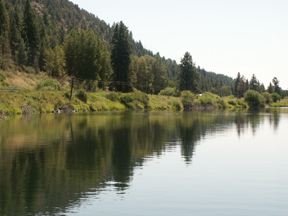
Sid: I use a five weight rod. I have my clients use my G-Loomis GLX rods. They are more forgiving, and they have less line shock. I use Cortland's Intermediate Sinking line in the camouflage version. I use Orvis Mirage 6x fluorocarbon leaders. I mostly use Seaguar Brand Max fluorocarbon tippet material. Search out working fish and target them with the appropriate bugs, either nymphs or emergers. I interjected, "And be willing to spend two to three years perfecting one pattern, such as the Emphemerella doddsi."
Most of us claim to be passionate about some aspect of our lives, but it is only when we dedicate our lives to study and make a life-time commitment to learning everything we can about the passion that drives us do we attain the status of a master. Few of us achieve that level. Sid Mathis is a master fly fisherman.
Dave Archer
Free Spirit Guide Service, Klamath Falls, Oregon
Sid Mathis
(541) 884-3222
Email: sidmathis@aol.com

